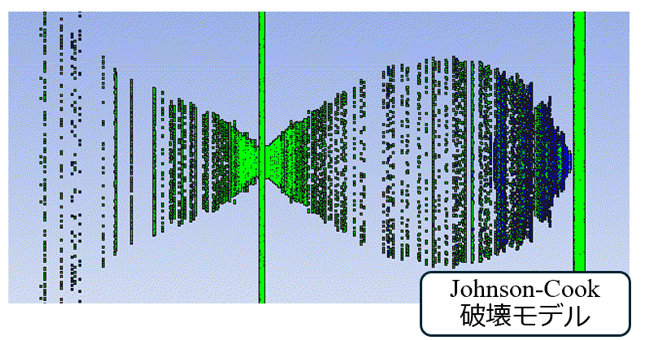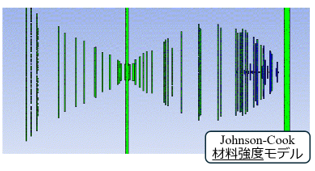-
-
December 11, 2024 at 5:21 am
kikuji.yuki.r3
SubscriberI have a question about the Johnson-Cook material strength model and the Johnson-Cook fracture model.
I understand that the Johnson-Cook material strength model is a model in which fracture is defined by yield stress, and the Johnson-Cook fracture model is a model in which fracture is defined by the accumulation of strain, but is this correct? Is this the specific difference?
Also, the Johnson-Cook fracture model is a model in which fracture is determined when accumulated strain exceeds a certain value, but I feel that this is inappropriate to apply to materials such as metals that fracture at a certain value, and that the model is more suitable for materials such as composites in which strain accumulates over a long period of time. I would like you to clarify any incorrect parts of this understanding. -
December 11, 2024 at 8:26 am
Nanda
Ansys EmployeeHello Kikuji,
The Johnson-Cook strength model is a model that defines the flow stress of a material as a function of plastic strain, strain rate, and temperature. This model captures how materials harden with deformation (strain hardening), how they respond to changes in strain rate (strain-rate hardening), and how temperature affects their strength (thermal softening). The Johnson-Cook fracture model, on the other hand, specifically addresses when a material will fail based on accumulated damage. It typically uses a criterion where failure occurs when the accumulated plastic strain exceeds a certain threshold.
Differences in failure/fracture definition: The strength model describes how materials deform under load without specifying when they will fail. The fracture model defines failure based on accumulated strain, indicating that once this accumulated strain exceeds a critical value, fracture occurs.
What’s best for what: The strength model applies to various materials under various loading conditions. The fracture model is particularly suited for dynamic loading scenarios and may be more appropriate for ductile materials where failure occurs after significant deformation.
For more information, you might want to look at the links below.
Regards,
Nanda.
If you are not able to open Ansys help links, refer to this forum discussion: How to access the ANSYS Online Help
Also, we launched a public help documentation website: Ansys Help
For more exciting courses and certifications, hit this link: Ansys Innovation Courses | ANSYS Innovation Space
-
December 11, 2024 at 8:34 am
kikuji.yuki.r3
SubscriberThank you for your reply.
When I run the program with only the strength model set and without the destruction model set, a phenomenon resembling destruction occurs. What does this mean?
I understand that the Johnson-Cook strength model determines destruction by stress, while the Johnson-Cook destruction model reproduces destruction by strain. Is this correct? -
December 11, 2024 at 9:35 am
Nanda
Ansys EmployeeHello Kikuji,
Can we know more details, perhaps screenshots of this "destruction" behaviour? Are the elements being distorted significantly?
When you run a simulation using only the Johnson-Cook strength model without the fracture model, any distorted element regions might indicate that the material is experiencing significant plastic deformation and potentially reaching its yield point. This behaviour can occur because the Johnson-Cook strength model accounts for material hardening and can predict when a material will yield under stress, even without an explicit fracture model.If you're observing unexpected results in your simulations, it is best to analyze your input parameters and consider integrating the fracture model for better accuracy in predicting failure events.
Yes, your understanding of both the models is correct, but there are more parameters to it. please have a look at the links in my previous response, and let us know if you're still not certain about which model to use for your application.
Best,
Nanda
-
December 11, 2024 at 12:11 pm
-
- You must be logged in to reply to this topic.



-
4512
-
1494
-
1386
-
1209
-
1021

© 2025 Copyright ANSYS, Inc. All rights reserved.









